Key takeaways:
- Advocacy against the death penalty is strengthened by personal narratives that humanize the issue and challenge supporters’ beliefs.
- Building coalitions and a supportive community reinforces the emotional resilience of advocates and enhances the effectiveness of their message.
- Effective strategies for abolition include grassroots organizing, storytelling, and utilizing social media to mobilize support and raise awareness.
- Engaging with lawmakers and collaborating with diverse advocacy groups can lead to greater impact and unity in the fight against capital punishment.

Understanding anti-death penalty advocacy
Understanding anti-death penalty advocacy requires a deep dive into the moral, legal, and emotional complexities surrounding capital punishment. I often find myself grappling with the haunting reality that innocent lives can be lost under such irrevocable laws. How can we justify a system that risks executing the wrong person?
In my experience, meaningful advocacy blends facts with personal stories. I remember speaking with a family member of a death row inmate who shared their heartbreak and frustration. Listening to their pain illuminated how impactful individual narratives can be, serving not only to humanize those on death row, but also challenging the beliefs of those who may support capital punishment.
It’s also crucial to understand that effective advocacy requires building coalitions across various communities. As I’ve attended rallies and engaged with different groups, I’ve seen how common threads—like the belief in the value of human life—unite us. Aren’t we all working toward a world where second chances are possible?
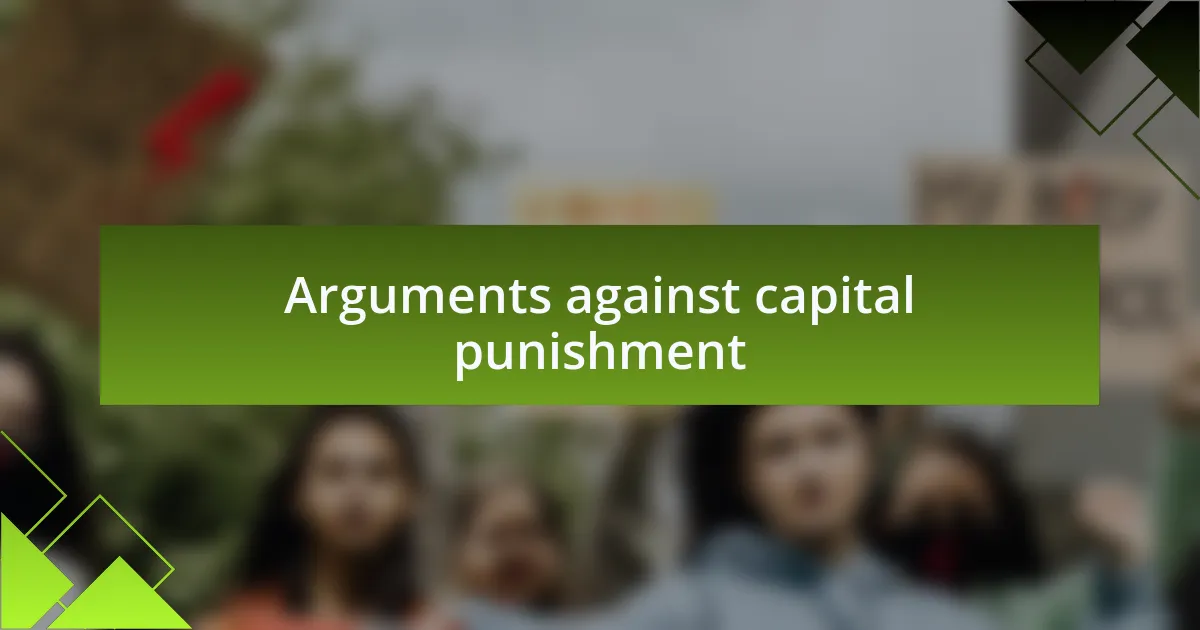
Arguments against capital punishment
One of the most compelling arguments against capital punishment is the potential for irreversible mistakes. I recall a case where DNA evidence exonerated a man who had spent 20 years on death row. It made me question how many others have suffered similar fates, trapped in a system that prioritizes punishment over justice. Doesn’t the possibility of wrongfully executed individuals should make us reconsider the entire process?
Another argument stems from the disproportionate impact on marginalized communities. I’ve engaged with activists who highlight how race, socioeconomic status, and mental health are often overlooked in death penalty cases. It’s disheartening to see how systemic biases can lead to unfair sentencing; should justice really depend on one’s background?
Moreover, the financial burden of capital punishment is staggering. It’s striking to me that cases involving the death penalty often cost much more than life imprisonment due to lengthy trials and appeals. Knowing that scarce resources could be better allocated to rehabilitation programs raises an important question: why do we continue to invest in a flawed system?
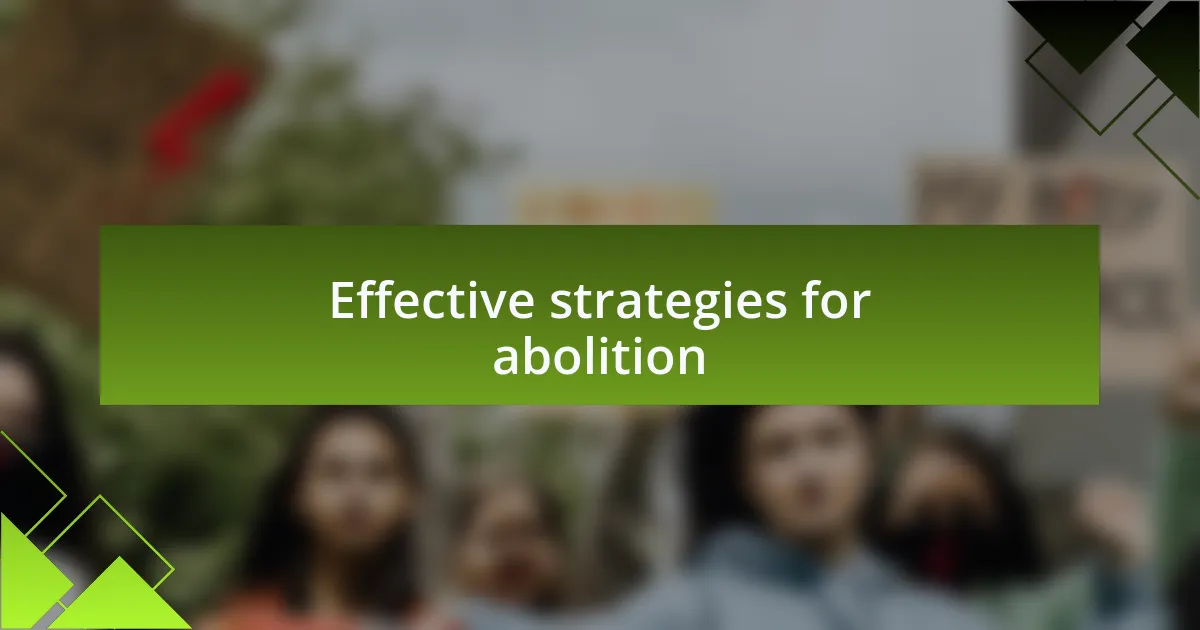
Effective strategies for abolition
One effective strategy for abolition is grassroots organizing. I remember attending a local meeting where a diverse group of people came together to share their experiences and motivations for fighting against the death penalty. It struck me how powerful it is when individuals unite around a shared cause, pooling their knowledge and resources. This sense of community not only strengthens our resolve but also amplifies our message, making it more challenging for policymakers to ignore.
Another approach that has proven successful is leveraging storytelling to humanize the issue. I participated in a campaign where we highlighted the stories of individuals impacted by capital punishment, including family members of victims and the wrongfully convicted. Sharing these narratives makes the abstract concept of abolition much more relatable. How can anyone remain indifferent to a parent describing the pain of losing a child to violence followed by relentless legal battles?
Finally, utilizing social media as a tool for advocacy cannot be overstated. When I first shared my thoughts on Twitter about a recent execution, the responses were overwhelming. Many people joined the conversation, sharing their own insights and spreading the word far beyond our local community. It’s fascinating how a single post can reach thousands, mobilizing support and fostering a broader understanding of the real impacts of the death penalty. Isn’t it amazing how digital platforms can make our voices echo in spaces where silence often reigns?
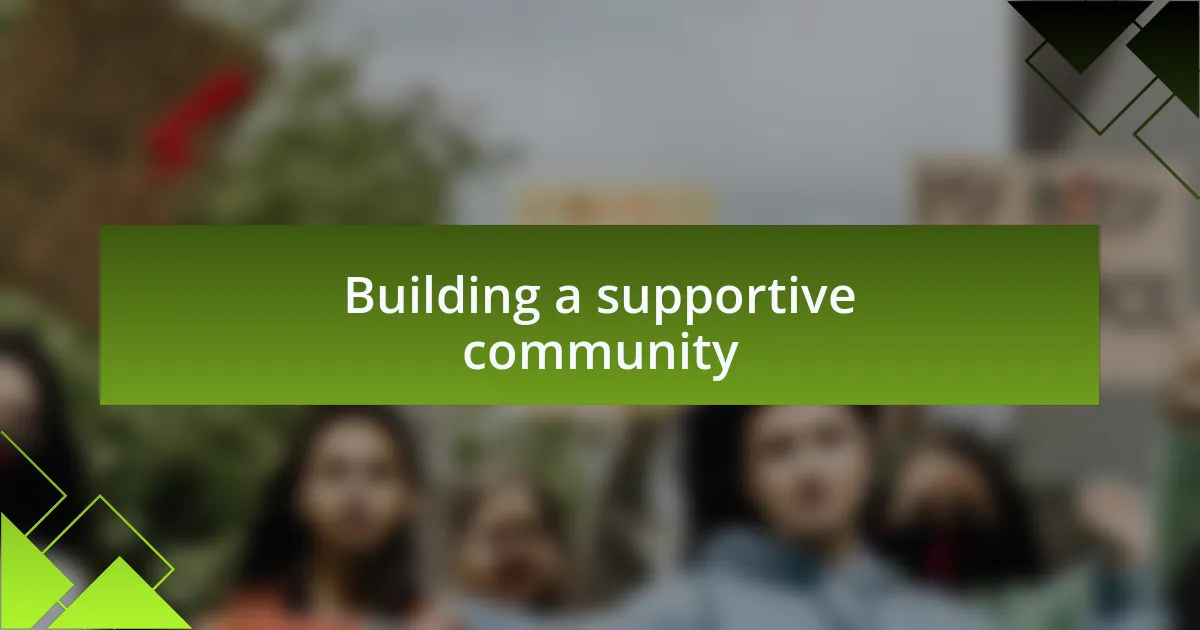
Building a supportive community
Building a supportive community is crucial in the fight against the death penalty. I recall a gathering where we weren’t just discussing strategies—we were sharing our vulnerabilities and fears. There’s something incredibly healing about connecting with others who understand the emotional weight of this fight. It reinforces the idea that we are not alone in this battle, and together, we can create a ripple effect that extends far beyond our initial circle.
As I reflect on our local advocacy group, I feel grateful for the friendships I’ve formed through our shared mission. We’ve celebrated our wins and consoled each other after setbacks. On particularly tough days, it is the encouragement from my fellow advocates that propels me forward. Have you ever experienced that warmth of community support? It’s a reminder that while the journey can be arduous, we are collectively stronger and more resilient.
Moreover, I’ve found that our community facilitates open dialogue, allowing us to confront uncomfortable truths about capital punishment. During a recent forum, we tackled challenging questions that many shy away from. How can we effectively communicate the urgency of abolition in a society that often seems indifferent? Discussing these topics openly not only enhances our understanding but also empowers us to articulate a more compelling narrative. Each conversation strengthens our resolve and builds a foundation of trust that is essential for long-term advocacy success.
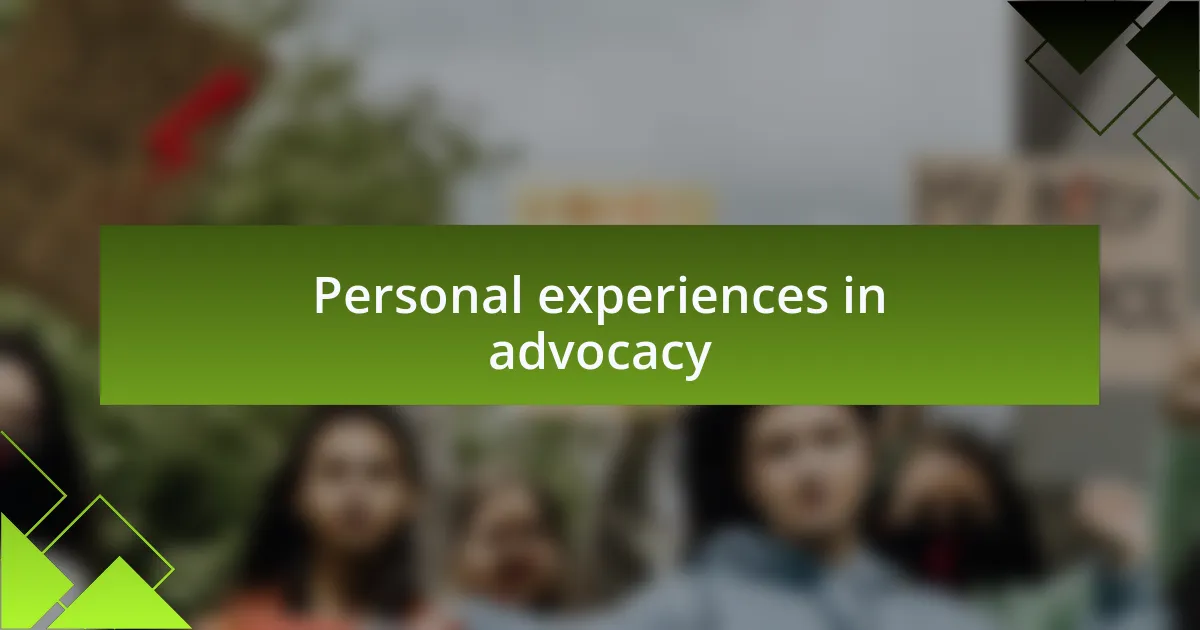
Personal experiences in advocacy
One of the most profound moments in my advocacy journey occurred during a direct action event. We had organized a peaceful protest outside a state prison, holding signs and chanting for justice. As I stood there, surrounded by passionate individuals, I felt an overwhelming sense of purpose. Did I ever imagine I’d be part of something so powerful? This experience solidified my belief in collective action, showing me that each voice contributes to a larger symphony of change.
In another instance, I remember volunteering at a local high school to educate students about the realities of the death penalty. Initially, I was nervous—how would they react to such a heavy topic? However, as the discussion unfolded, I was moved by their curiosity and engagement. It was heartening to see young minds eager to challenge the status quo. Those moments reminded me that our work isn’t just about abolishing the death penalty; it’s about nurturing a new generation of advocates.
There are days when the weight of this cause feels heavier than others; I often wonder how I can sustain my commitment. I think back to the stories of those wrongfully convicted that I’ve come across. There’s a certain urgency in their narratives that pulls at my heart, igniting a fire within me. How can we turn away from such painful truths? Each story not only compels me to act but serves as a stark reminder of why our advocacy is essential.
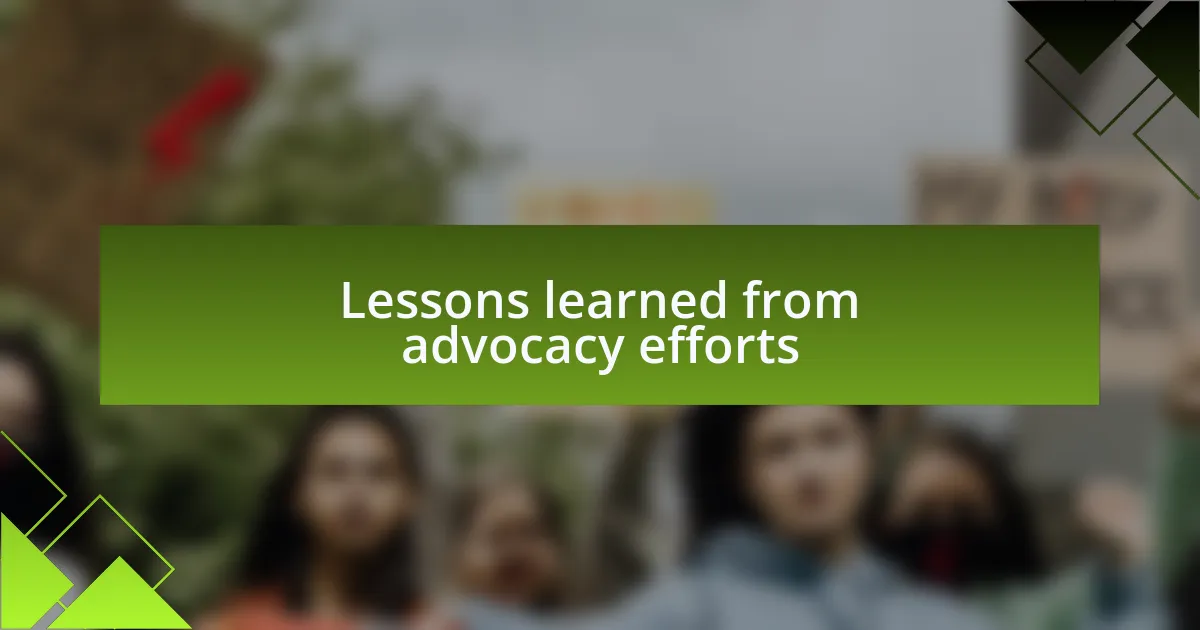
Lessons learned from advocacy efforts
Engaging with lawmakers has taught me invaluable lessons about building bridges. During a meeting with a state legislator, I was surprised by their willingness to listen when I shared personal stories of individuals affected by the death penalty. That experience highlighted for me the importance of humanizing the issue; statistics matter, but nothing resonates quite like a heartfelt story.
Another powerful lesson emerged from collaborating with other advocacy groups. I recall a workshop where we pooled resources and strategies, leading to an unexpected alliance. It was eye-opening to realize that despite differing approaches, we all shared a common goal. This taught me that unity in diversity not only strengthens our voice but also amplifies our message, creating a more profound impact.
One particularly challenging moment came when I faced criticism from those who believed in the necessity of capital punishment. I remember feeling a mixture of frustration and fear, questioning if I was fighting an uphill battle. Yet, this adversity pushed me to refine my arguments and solidify my resolve—reminding me that doubt is a natural part of advocacy. How could I grow and improve without facing those tough conversations?